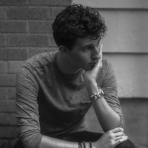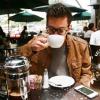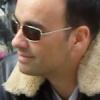Search the Community
Showing results for tags 'print'.
-
I have got a pretty dense film print that I am looking to have digitized, and I wanted to take advantage of the LaserGraphics Director "3-flash HDR" feature to extract as much visual fidelity from print as I possibly can. I don’t believe I have seen many labs or post-production studios which offer will-call or consumer scanning services. Anybody here know of a place which scans with the Director that is currently accepting non-studio requests for scanning services? Thank you.
- 12 replies
-
- lasergraphics
-
(and 2 more)
Tagged with:
-
I'll keep this brief because I believe I have asked a similar question to this one before a few months ago and I simply cannot find the chat. Kodak 2383/3383 is a negative film. When a fully developed VISION3 negative is printed onto projection film, the two negative stocks in combination yield a positive projection print once the 2383 is fully developed. If someone were to shoot a film on lets say Kodak 5294 Ektachrome 100D 35mm, how would they then go about printing that developed positive onto print film? Would they have to essentially double-print the film in order to yield an eventual positive projection print? Are films that are shot on Ektachrome so rarely projected that this scenario is simply not all that common of an issue? Thank you in advance for the insight!
- 13 replies
-
- ektachrome
- kodak
-
(and 2 more)
Tagged with:
-
I’m pretty confused on this fact about contact printers, color timing, and printer lights, so hopefully someone will be able to shed a little light on this subject. A number of professionals on this sight have referred to the color timing process done with printer lights as a "subtractive color process”, yet I’ve read quite a few guides and manuals from both Kodak as well as Bell and Howell that explicitly says the opposite. The Bell and Howell Model C manual says that, prior to 1961, contact printers utilized a subtractive lamphouse which required the use of a vast number of ELM (Eastman Lamphouse Modification) filters if one wanted to make scene to scene color corrections. This was a very tedious and time consuming process. A subtractive printer uses a white light source to produce properly balanced prints. Combinations of color filters control the amounts of red, green and blue light. Printing that requires a lot of scene-to-scene color corrections is very difficult on a subtractive printer because a new color-correcting filter pack must be physically inserted between the light source and the printing aperture for every correction. Overall light changes (intensity changes) are made by using a variable aperture or a neutral density filter. This problem was eventually solved with the advent of the additive lamphouse. "Modern additive printers use a set of standard dichroic mirrors to separate or combine the light from a tungsten-halogen bulb into its red, green and blue components. The mirrors have a multilayer coating of dielectric material that reflects a specific wavelength region while transmitting other regions. Adjustments are made to the mirrors to achieve the desired color balance on the final print". Over the decades, subtractive color timing was phased out and eventually went extinct, replaced entirely by the much simpler, speedier, and more direct additive model. From what I’ve seen, all of the contact printers still in use today are built with an additive lamphouse, exclusively utilizing an RGB color model as opposed to a CMY model. From searching I’ve done, I cannot seem to find a single contact printer still in use or operating in 2024 which uses a subtractive lamphouse. Yet even to my eyes, so much of the final print work that I’ve seen timed with a B&H Model C additive lamphouse bears a very strong resemblance to a more traditional subtractive color finish in terms of density, saturation, hue, and tonal rendition. This whole revelation now seems all the more confusing to me as I first learned about printer lights through DaVinci Resolve, and that whole hotkey model operates on seven distinct levels: red, green, blue, cyan, magenta, yellow, and the master. And now I’ve come to learn that actual printer lights only utilize three, red, green, and blue (with the master being controlled by raising or lowering those three values by the exact same amount). Stupid Question: Why couldn't one simply use the additive timing method with the dichroic mirrors, only with CMY taking the place of its corresponding RGB counterparts. I’m not sure if that would require a 4,800K white bulb instead of a 3,200K Tungsten one that additive lamphouses need. What is it about the subtractive timing process that absolutely requires the use of all those filters instead of simply the mirrors and deflectors?
- 13 replies
-
- color grade
-
(and 1 more)
Tagged with:
-
For general use, I understand that the main application of optical printing was for changing the format size from the negative to the print--whether that be from a 35mm negative to a 16mm print or the inverse. I also know that optical printers were used a lot for effects work, title cards, and credits. Contact printers on the other hand were utilized mostly for the color timing process. With all that in mind, I am not too sure of the full extent of one printer's capabilities vs the other. Are you also able to color time on most optical printers? Does one printer generally produce higher "quality"/resolution prints than the other? Which are more commonly found and are still in use? And why would someone exclusively use one over the other?
-
I shoot with expired film quite a lot. As a matter of fact, I would say that it's my go to. My favorite stock I've ever shot with is hands down Kodak EXR 5245 50D. I have lately realized, however, that there are a few realities about shooting on expired that I need to come to terms with quickly. It’s unreliable, it’s in short supply, it’s going extinct, and no professional production wants their investment shot on expired film. I need to move on, but frankly, I have always had a visual distaste for VISION3. I want to further pursue something I've only ever experimented with but never fully committed to in the past: emulating the photochemical characteristics of older Eastman fine grain film stocks by experimenting with exposure, density, and processing using modern Kodak film. For reference, I most often shoot on 2-Perf Techniscope with the original line of Basuch & Lomb Baltar lenses dated at the 1940s. The two Eastmancolor stocks I am most interested in trying to emulate are ECN 5248 25T (1952-1959) and ECN 5250 50T (1959-1962). About a year ago I did a short experiment on 35mm with Baltar lenses where I shot a few short reels of footage on VISION3 500T using ND filters in direct sunlight outside and had them exposed and processed in different ways. I then had them scanned in 12-bit HDR and brought them into DaVinci to level out all the footage and see how my end products differed. The four types of footage I got were underexposed one stop and developed at box speed, underexposed two stops and developed at box speed, exposed at box speed and underdeveloped one stop, and exposed at box speed and underdeveloped two stops. After leveling out all my footage in Resolve, I was extremely disappointed in the results. Once normalized with HDR tools in DaVinci, all the underdeveloped footage looked nearly identical to a standard exposure and development. And the underexposed footage just had crushed blacks with very little discernable differences other than that. I considered it a failed endeavor and steered clear of these kinds of experiments again after that. Top visual inspirations: 5248: Rear Window (1954) The Ten Commandments (1956) Vertigo (1958) Ben-Hur (1959) Rio Bravo (1959) 5250: Spartacus (1960) The Magnificent Seven (1960) West Side Story (1961) Lawrence of Arabia (1962) It’s a Mad Mad Mad Mad World (1963) Assuming that the 4k and 1080p blu-rays of the previous film were scanned from the negatives themselves and not the print, I will take it that what I've seen is a quality representation of the stocks in question. My eyes often roll when people talk about footage looking "vintage" "old" or "film-like". Mostly because this could refer to over a dozen different visual aspects in one's footage, and what invokes the feeling of "filmlike" to one person may differ from another. For the sake of this experiment let’s ignore aspects such as lens choice, format size, granularity, lighting contrast, production design, and (for the most part) color scheme. Let’s instead talk about the photochemical qualities of the negative itself. I mostly associate the Eastmancolor look from the mid 50s to the early 60s with neutral to muted highlights, rich and deep blacks, with the density and dynamic range that was available with those stocks at the time. I'm young and an amateur in this field, so I don't understand film on a more in-depth level like so many others hear. But firstly, I'm curious to know what the distinction between film density and dynamic range is, cause I can't quite make heads or tails of it. I am hoping someone with lots of (or any) experience with celluloid, the photochemical process, and the visual evolution of film over the decades can chime and and possibly steer my ventures in the right direction. THE 2383 QUESTION: Small update. During my writing of this post a friend of mine found an interesting video and vimeo and shared it with me. He suggested it as a possibility for me to shoot with 2383 in camera with lots of sunlight and that if developed using ECN-2 and given a simple color correction, the end result may be something close to what I am after. It is difficult for me to discern whether what I like so much about this clip is due to the 2383 stock or if it is just the hard tungsten lighting. I don’t currently have the time or funds to properly run a test myself but I’m putting some consideration into shooting some footage with 2383 in camera rated at 6 ASA in the cloudless sunlight and having it cross-processed using ECN-2. I can get a good 12-bit HDR scan and see if what I’m left with retains the photochemical qualities I have in mind. This clip does remind me very much of the 5250 stock—more so than most other emulations of vintage film do. But as I said, it could just be the hard tungsten lighting. I'm not certain.
-
Hi, I have a question regarding a specific look that I’ve never quite been able to pin down. I’ve surmised it to be a result of scanning a printed positive. The look I’m referring to can be seen in the bonus materials of both The Master (2012) and Inherent Vice (2014). It’s mostly noticeable in night interiors, dense, crunchy blacks, and ghostly, halated highlights. The other films that I’ve noticed this quality in have been older, and it would make sense if a negative was not available for restoration, and instead a print was scanned. A DP buddy of mine had told me in the past that you can’t really scan a print because “there’s no information,” but I’m wondering if that’s what’s contributing to the quality of this look I’m referring to. I recently read an interview with DP Marcell Rev where he states that they tried scanning positive prints as a test for the Euphoria season 2 look. Wondering if I can get some input here on what I think I’m seeing. Has anyone scanned a print before, and does it have a specific quality? Providing some links for reference: (Doris sitting on stairs) (house party stuff at 1:00) https://www.lecinemaclub.com/now-showing/entretanto/ (house party stuff) Best,
-
Hi all, Can't remember from where, but I've heard of the ability to shoot on print stock just as one would on regular motion picture stock, with the idea of having a very punchy and contrasty look. Does anyone have experience with this? Looking at the Kodak catalog, it seems print stock primarily comes in 2,000' rolls, which would make the process of downspooling a bit tedious...
-
Hi, I'm planning on applying to a film school this summer, for a directing course. My main focus has always been directing, with cinematography being both a fascinating hobby and something I've had to do for the ultra low budget films I've made. Now, the requirements are that you submit at least two films, of which at least one "made on film (16mm, super 16mm or 35mm)". I've got plenty of digital films to submit, but nothing on film. So I have to make a new one. I've never shot anything on film and, as much as I'd like to have this experience, it would be very expensive. Even with clearance stock, if you factor in renting the camera, developing, scanning, then making the final prints, it would run into the thousands. So I've thought that, since I would be scanning the film anyway and edit it in an nle, I could forgo shooting on film and shoot digitally instead, making a final print on film. The Blackmagic Pocket Cinema Camera has the right sensor size, dynamic range and resolution, so the way I figured, it would look very close to film. And the grain would be in the final print anyway. Might be a weird or crazy plan, but that's why I'm running it people who've worked on film before. Any suggestions welcome! Thanks, Paul. P.S. Regarding the ethics of it, I'm applying to a Directing course. Directing is the same, no matter the medium. If it was a Cinematography course it would've been a different story, but as it is, I seems like a pretty random requirement.
- 19 replies
-
- film school
- 16mm
-
(and 3 more)
Tagged with:
-
Hello everyone, I have researched online and can't come to any solid conclusions about how sound design and/or mixing is done when you're working optically. For instance: I'm making a movie and seriously considering taking it the full photochemical route, ie. shooting on 35mm scope, processing the film at Fotokem, getting a work print made (no DI), cutting the film on a flatbed, conforming the negative, timing the answer print, and striking a release print. The idea is to keep my movie completely off a computer. But the thing I can't seem to wrap my brain around is the audio part of the process. How do I sync the separately and digitally recorded dialog to my work print? How do I mix in the music I want? Most importantly, the sound effects? I tend to have substantial sound design in my films, sometimes 150 tracks or more, and spend around 80% of my post production process on sound. Is there a way to do this optically? Should I just go with a DI? I hear a lot of terms like sepmag, and 35 sound mag, but I'm not really sure what they are or how you edit with them. Thanks in advance for your help. Colin
-
Hello, all. Tommy at Video & Film Solutions transferred the 35mm blowup of my first short film (and Tommy is a great guy who does great work) and as expected, it has some spots. Long story, but in the blowup process all 2,300 or so frames have 3 to 5 specs. They are in fixed locations so normal DNR cannot be used.And yes, they are crazy distracting. You might wonder why I didn't transfer from a 16mm print. Well, I don't have one. To save our budget we had a 35mm blowup made directly from the negative. I have the 16mm negs in A B C rolls and transferrinf them means much more money (more than double). Not in the budget. Next time though. I just wanted to get this thing transferred since all I have had for years is a crappy VHS from Avid. :angry: Anyway, I have watched a few tutorials and read some articles. No two methods are alike, that's for sure. And I gotta say, it looks a little out of my league. But I'll give it a shot and would love to hear from the experts on my best shot. I am on a PC, a pretty darned good one and I run Adobe CS5 Production Premium. I do not have the money to upgrade or buy new software. I need to work with what I have or what's free. But I imagine I could do a free trial of CS6 since I see some are using Premiere pro and Photoshop's clone brush/tool. I wonder if installing it and then removing it will mess up my CS5 install??? I'll be patient with this. I know there is no overnight fix and that it will take work, but advice is welcome. This tutorial looks outdated and possibly inadequate for what I need. https://vimeo.com/24850536 A newer way, requiring CS6. http://www.premiumbe...ects-photoshop/ Here is what I am dealing with. (please note... These are not frame exports. I just hit print-screen with the file in QT and then pasted them into Paint Shop Pro, so do not judge telecine from these examples.)





